Ginkakuji Temple & Maples
2 Ginkakuji-cho Sakyo-ku Kyoto
2. Article on Jul. 14, 2009
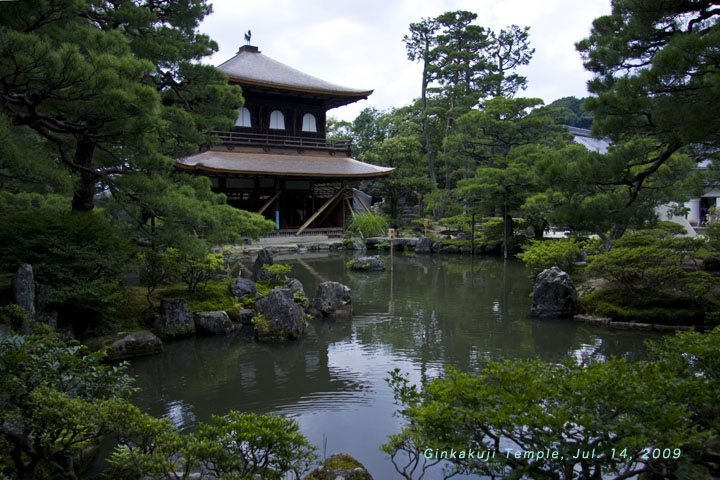
A Scenery of Ginkaku under the restoration once every 100 years

A scenery of Tohgu-doh Hall & Pond
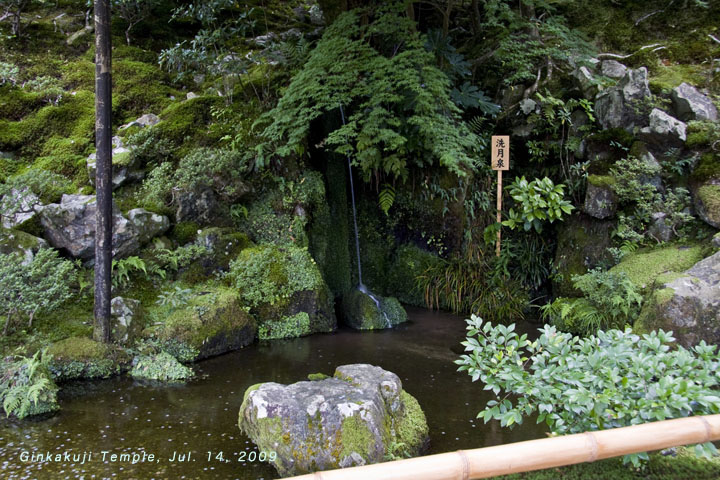
Sengetsu-sen Waterfall & a maple tree

Water from Ochanoi fountain is used for Japanese green tea and tea ceremony
Let me show you 3 photos of Ginshadan-Garden.

Ginshadan-Garden seen through Katohmado, that is, a kind of fire-like or flower-like window of the temples
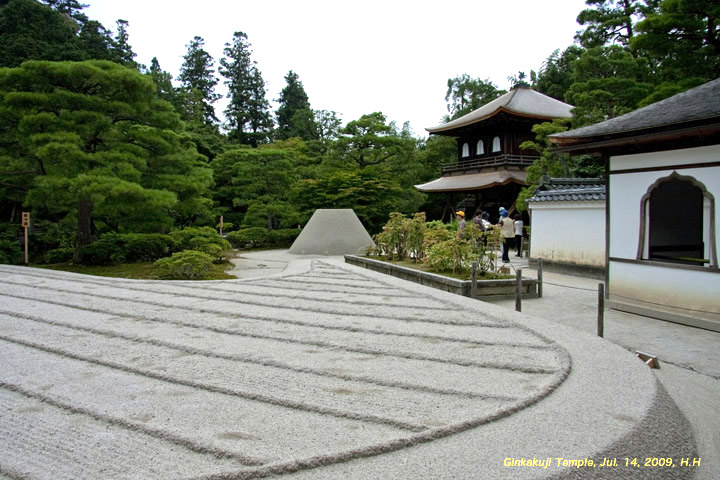
Ginshadan-Garden & Kohgetsu-dai Hill seen from the main hall Hohjoh
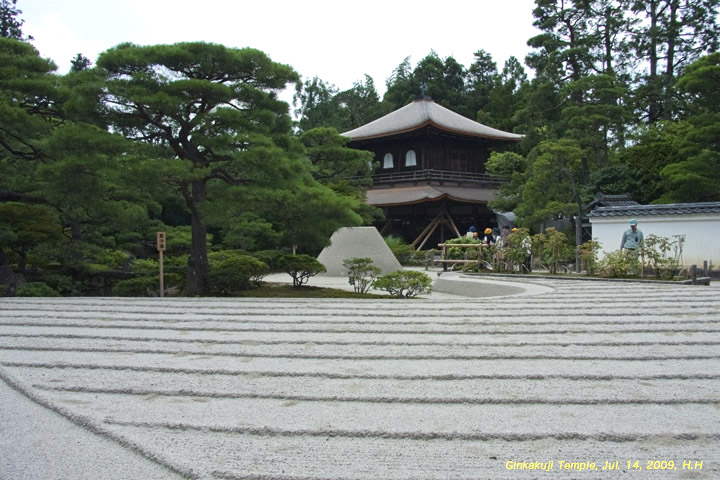
Ginshadan-Garden, Kohgetsu-dai Hill & Ginkaku ; Kannon Hall
1. Article on Sep. 05, 2007
According to pamphlet,
" Ginkakuji Temple , a Zen temple, was established in 1482 by ASHIKAGA Yoshimasa,
the eighth Muromachi Shogunate.
Yoshimasa, following Kinkakuji Temple Kitayama Hall built by his grandfather ASHIKAGA Yoshimitsu,
built villa Higashiyama Hall to spend his retired life.
Ginkakuji is the common name, and formally it was called Higashiyama Jishoji,
taking after Yoshimasa's posthumous title after his death."
" Ginkaku was originally called Kannonden Hall, after Shariden of Rokuonji (Kinkakuji) and Ruriden Hall of Saihohji.
It is two storied: the first floor, Shinkuuden is built in Shoin style, a traditional Japanese residential architecture style,
and the second floor Chouonkaku Hall is Chinese temple style
having Katoumado in the panel wall and a Chinese sliding door.
The golden bronze phoenix on the roof facing east constantly guards
Ginkakuji dedicated to Kannonbosatsu, the Goddess of Mercy."
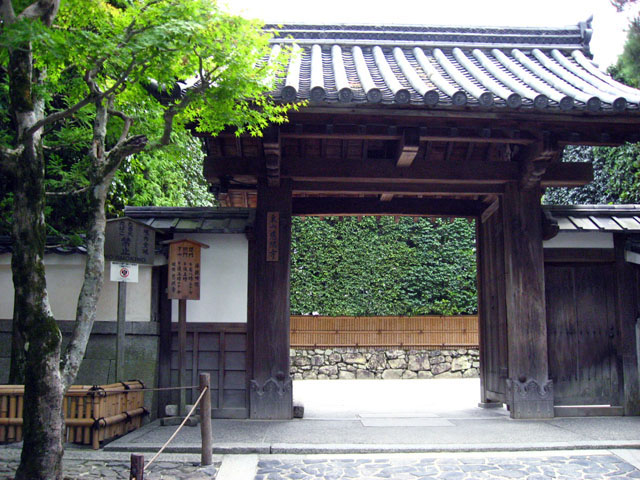
Main gate of Ginkakuji Temple & a maple tree
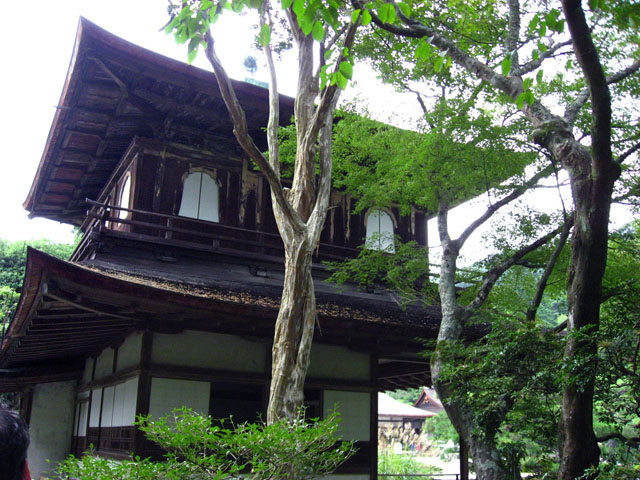
Ginkaku ; Kannon Hall
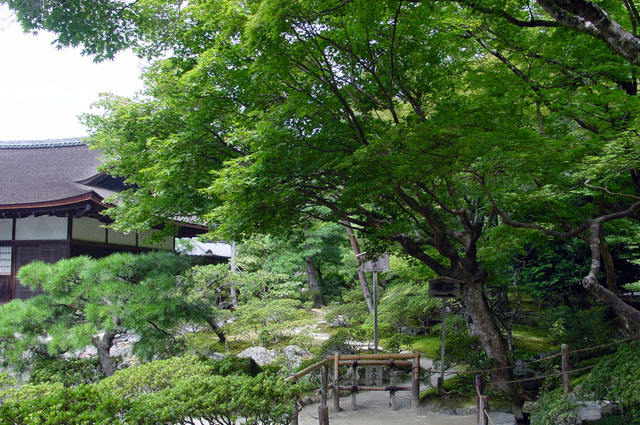
Walking path near Tohgudoh & maples
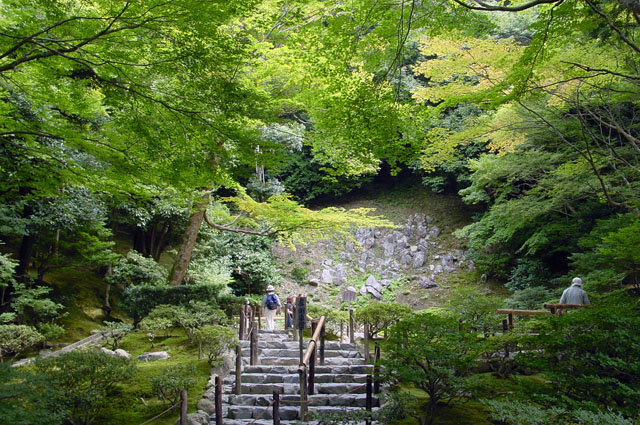
Ochanoi fountain & surrounding maples
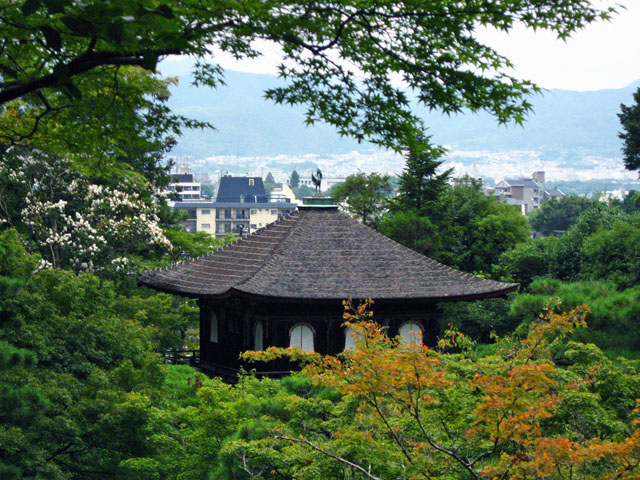
Ginkaku surrounded by maples
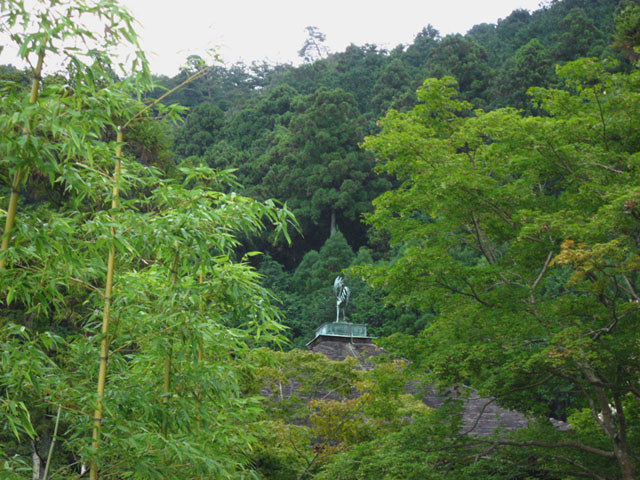
Ginkaku with Phoenix, Bamboo and Maples
You will be promissed to enjoy Autumn colors.